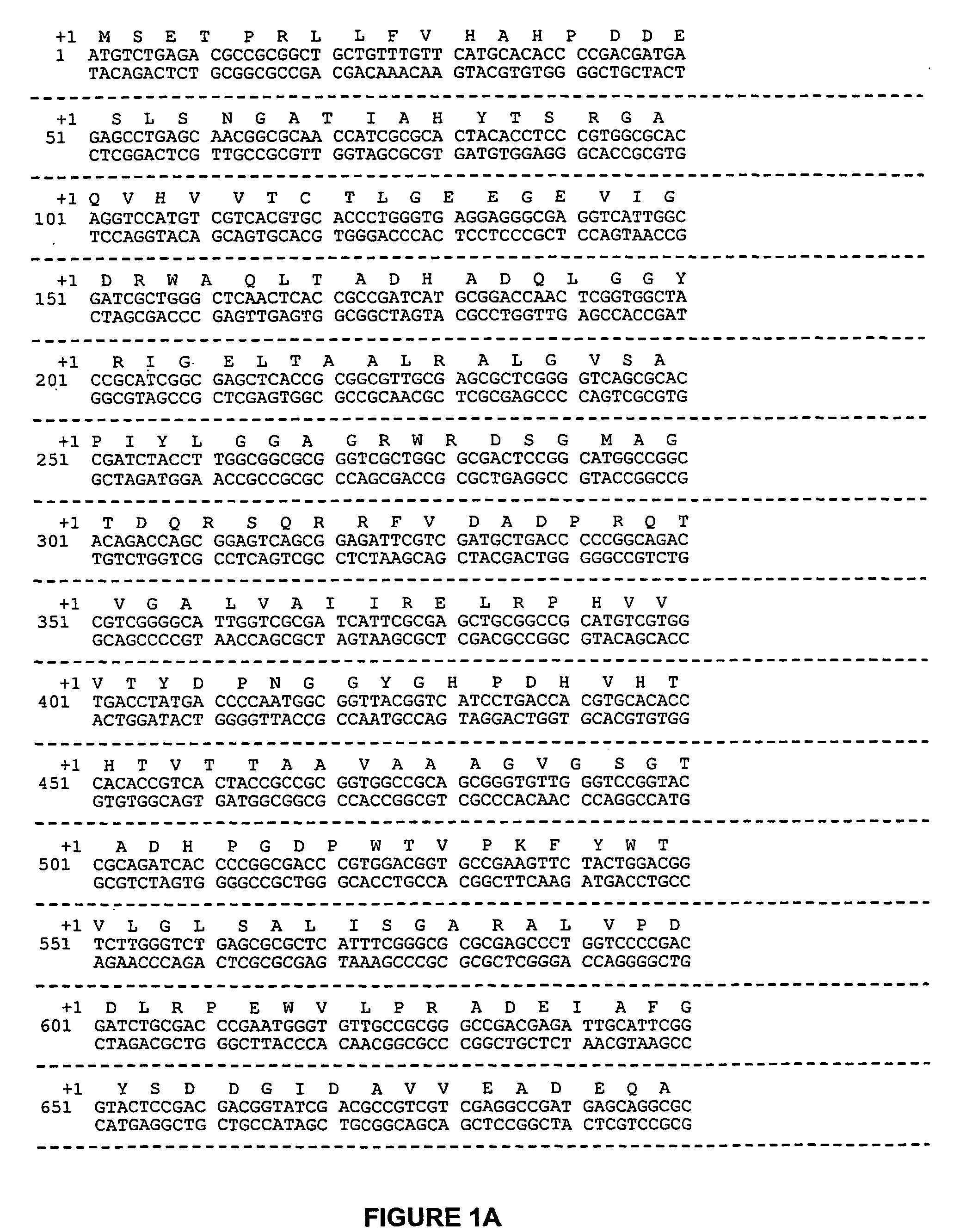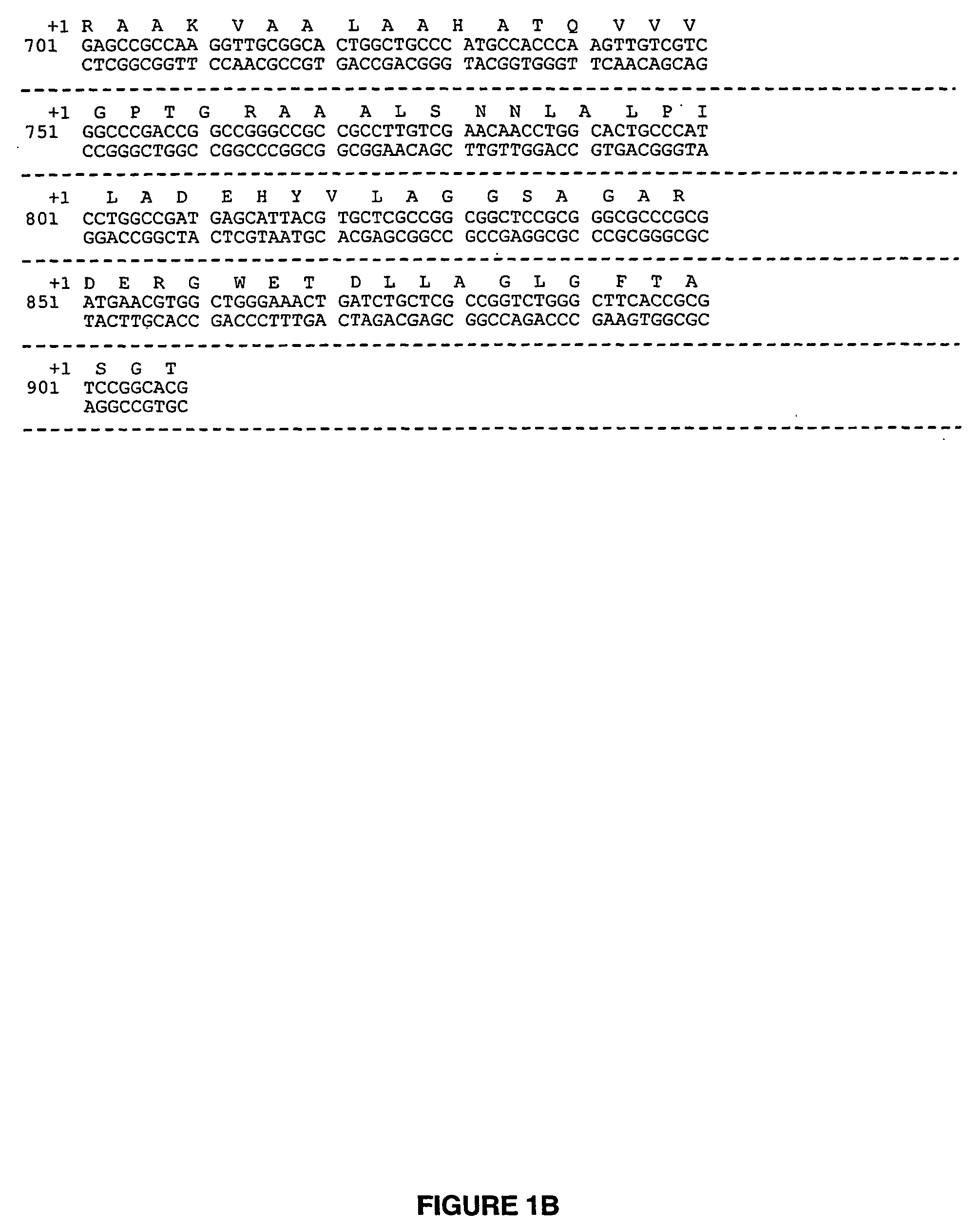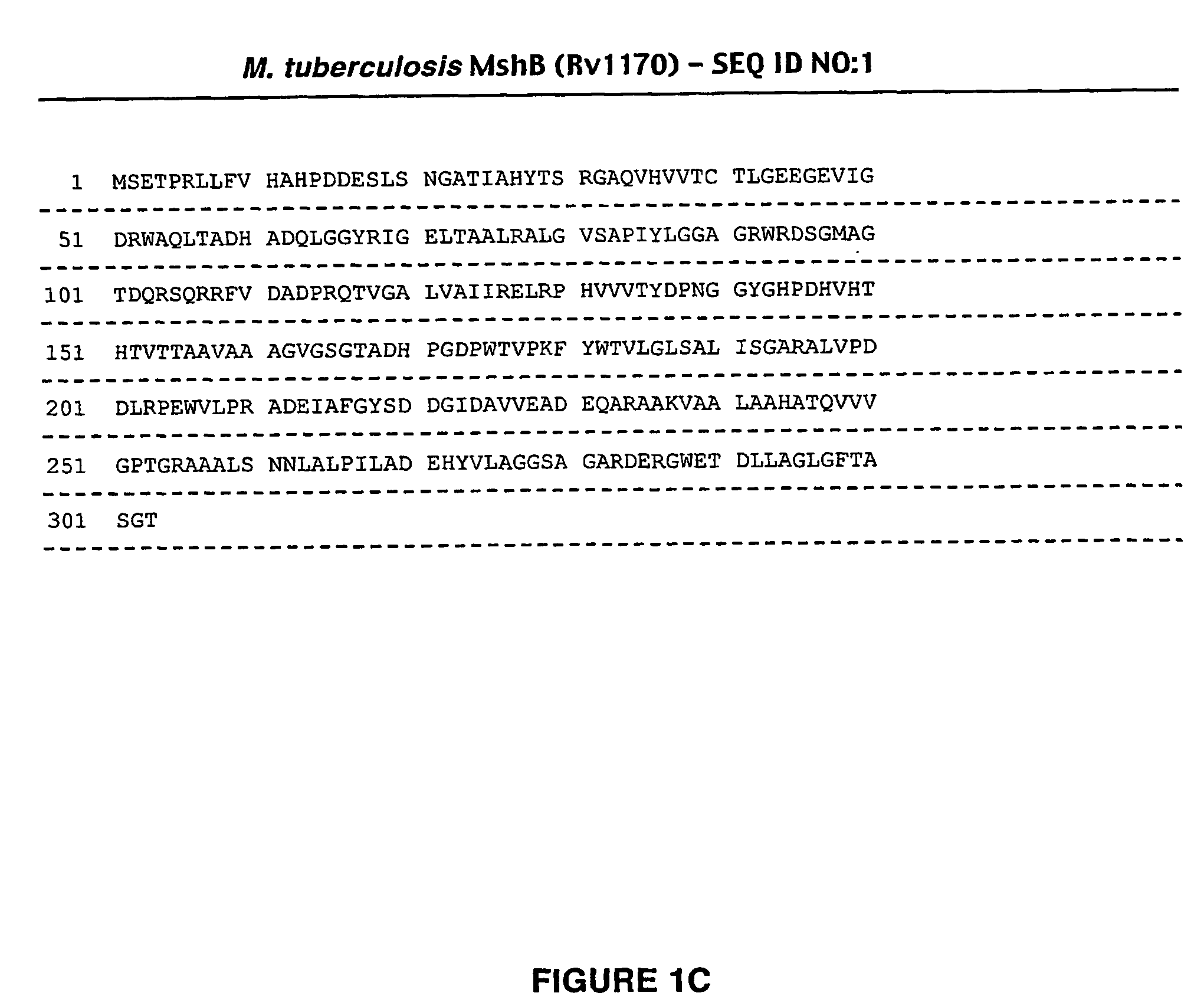Acetyl glucosaminyl inositol deacetylase, a mycothiol biosynthetic enzyme, and methods of use
a technology of acetyl glucosaminyl inositol and biosynthetic enzyme, which is applied in the field of enzymes, can solve the problems of oxidative stress in aerobic organisms, and achieve the effect of inhibiting the growth of acetyl glucosaminyl and inhibiting the growth of bacterium
- Summary
- Abstract
- Description
- Claims
- Application Information
AI Technical Summary
Benefits of technology
Problems solved by technology
Method used
Image
Examples
example 1
[0138] Preparation of Reagents and Assay Methods Used. Mycothiol (MSH) was isolated from M. smegmatis and derivatized with monobromobimane to form the MSH-bimane derivative (MSmB).
[0139] Mycothiol can be purified from Streptomyces clavuligerus, M. smegmatis, or from cells of any other mycothiol containing bacterium. Early stationary phase cells (25 gm wet weight) were extracted with 250 ml of 50% acetonitirile containing 25 mM methanesulfonic acid and 1 mM DTT at 60° C. for 15 min. The cell debris was removed by centrifugation for 30 min (4° C.) at 20,000×g. The excess acetonitrile was removed using a rotary evaporator. The aqueous extract was neutralized with Tris base to pH 8.0 and clarified by centrifugation for 30 min (4° C.) at 20,000×g The extract was loaded on a 25×70 mm propyl thiol Sepharose 6B resin activated with 2-mercaptopyridine with 1 mmole total thiol binding capacity. The column was washed with 10 column volumes of 20 mM Tris-HCl pH 8.0 to remove unbound extract co...
example 2
[0146] Cloning and Expression of the Rv1170 gene from M. tuberculosis and demonstration of its GlcNAc-Ins deacetylase activity. Since the invention deacetylases and the mycothiol S-conjugate amidase both cleave an amide bond involving glucosamine, further studies were conducted to determine whether these proteins might be structurally related. A search was conducted of the Sanger Centre database for homologs of the 288 amino acid M. tuberculosis deacetylase, Rv1082. The closest homolog found was Rv1170, with a length of 304 residues and 36% identity to Rv1082 with homology throughout the sequence.
[0147] To isolate the Rv1170 gene from M. tuberculosis H37Rv genomic DNA was prepared using known methods. The open reading frame Rv1170 was amplified from this DNA with the following primers:
5′-TAGCCATGGTGTCTGAGACGCCGCG-3′(SEQ ID NO:8)and5′-GGATCCCGGGGTGAAGCCCAGAC-3′(SEQ ID NO:9)
These primers contain NcoI and BamHI restriction sites, respectively. PCR was performed with Taq polymerase ...
example 3
[0155] Extracts of M. smegmatis and mutant 49 have deacetylase activity. If the deacetylase is involved in MSH biosynthesis and if mutant 49 is blocked at an earlier step in the MSH-production pathway, then strains mc2155 and 49 should both produce deacetylase activity. To test this hypothesis, centrifuged extracts of exponentially growing cells were assayed in duplicate for GlcN-Ins production with and without the addition of 100 μM GlcNAc-Ins. The background rate for production of GlcN-Ins measured without added GlcNAc-Ins was high for strain mc2155 (6.1±0.1 pmol min−1 mg of protein−1) presumably reflecting the substantial endogenous level of GlcNAc-Ins present in the undialyzed extract. Addition of 100 μM GlcNAc-Ins increased the rate to 19.7±0.4 pmol min−1 mg of protein−1, giving a net rate increase of 13.6±0.5 pmol min−1 mg of protein−1. For mutant 49, which does not contain GlcNAc-Ins, the background rate was −1 mg of protein−1 and the rate with 100 μM GlcNAc-Ins was 16.4±1.4 ...
PUM
| Property | Measurement | Unit |
|---|---|---|
| Fraction | aaaaa | aaaaa |
| Time | aaaaa | aaaaa |
| Time | aaaaa | aaaaa |
Abstract
Description
Claims
Application Information
 Login to View More
Login to View More - R&D
- Intellectual Property
- Life Sciences
- Materials
- Tech Scout
- Unparalleled Data Quality
- Higher Quality Content
- 60% Fewer Hallucinations
Browse by: Latest US Patents, China's latest patents, Technical Efficacy Thesaurus, Application Domain, Technology Topic, Popular Technical Reports.
© 2025 PatSnap. All rights reserved.Legal|Privacy policy|Modern Slavery Act Transparency Statement|Sitemap|About US| Contact US: help@patsnap.com



